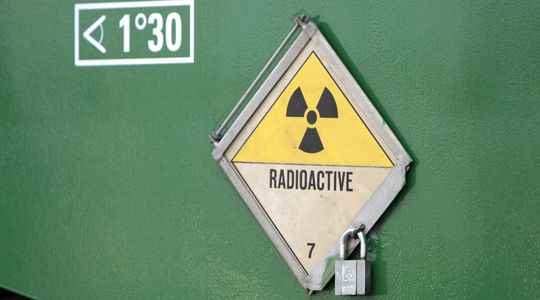“Absurd” and “dangerous” accusations. This is how Ukrainian Foreign Minister Dmytro Kouleba reacted to Russia’s allegations. Moscow said on Monday (October 24th) that Ukraine had entered “in the final phase” of the manufacture of its “dirty bomb”, a conventional bomb surrounded by radioactive materials intended to be disseminated in the form of dust at the time of the explosion.
“According to the information we have, two Ukrainian organizations have specific instructions for making the so-called ‘dirty bomb’,” Lt. Gen. Igor Kirillov, the Russian army’s substance commander, said in a statement. radioactive, chemical and biological products.
According to him, “the purpose of this provocation is to accuse Russia of using weapons of mass destruction in Ukraine and thus launch a powerful anti-Russian campaign in the world”, he accused. “The detonation of a radioactive explosive device would inevitably lead to contamination of the area over an area of up to several thousand square meters,” he warned. Already on Sunday, Russian Defense Minister Sergei Shoigu had informed his American, French, British and Turkish counterparts of “his concerns linked to possible provocations on the part of Ukraine with the use of a ‘dirty bomb ‘”.
“The real danger is panic”
This “dirty bomb” is also called a “radiological dispersal device” (RDD). “We speak of a ‘dirty bomb’ when explosives are used to spread radioactive dust or pellets”, explains the health department of the US state of Maryland. “A ‘dirty bomb’ differs from nuclear weapons in that it does not generate the same degree of power and the same level of mass destruction as a nuclear explosion”, specifies this same source.
This type of bomb is therefore not considered an atomic weapon, the explosion of which results from nuclear fission (A-bomb) or fusion (H-bomb) and causes immense destruction over a wide radius. Much less complex to make, the “dirty bomb” uses a conventional explosive and its main purpose is to contaminate a geographical area and the people who are there both by direct radiation and by ingestion or inhalation of radioactive materials.
Only people very close to the blast site, however, would be exposed to radiation sufficient to cause immediate serious illness. However, radioactive dust and smoke can travel further and pose a health hazard if the dust is inhaled or contaminated food or water is ingested.
Although the damage caused by a “dirty bomb” could therefore be much less than that caused by an atomic bomb, such an explosion could above all lead to widespread panic. “‘A ‘dirty bomb’ is not a ‘weapon of mass destruction’ but a ‘weapon of mass disruption’ which aims primarily to contaminate and scare,” summarizes the US Nuclear Regulatory Commission (US NRC). “To make a ‘dirty bomb’, you have to find materials that are sufficiently dangerous and disturbing for the media effect to be strong. Not necessarily the toxic effect: the real danger is panic”, estimated in 2014 with AFP Patrick Cappe de Baillon, spokesperson for the French Atomic Energy Commission.
The radioactive materials needed to manufacture such an explosive device are used in hospitals, research establishments, industrial or military sites. “Radioactive substances from nuclear fuel storage facilities used in the (Ukrainian) Chernobyl nuclear power plant can be used” to make a “dirty bomb”, Russian General Igor Kirillov argued on Monday.
“A new step in climbing”
Does the risk of using a “dirty bomb” in the conflict exist? For Westerners, Ukraine does not intend to use this weapon in any case. This Monday, in a joint statement, Paris, London and Washington considered that Moscow’s allegations against kyiv are “false”. “No one would be fooled by an attempt to use this allegation as a pretext for escalation,” said the three foreign ministers.
French Foreign Minister Catherine Colonna also “spoke to the Ukrainian Foreign Minister last night about Russia’s obviously false allegations”, she tweeted.
Ukrainians and Westerners alike see it as a threat of preparations for a false flag attack, suspecting Russia of being prepared to detonate a “dirty bomb” itself to justify military escalation, for example by employing a tactical nuclear weapon in retaliation.
Ukrainian President Volodymyr Zelensky, also rejecting these accusations, assured that they demonstrated that Russia was preparing “a new stage in the escalation”, and that the world had to respond to it “as harshly as possible”.
